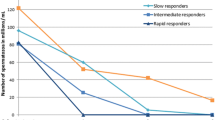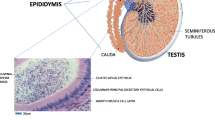Abstract
After a review of investigations into the possible use of inhibin in the regulation of male and female fertility, briefly described and summarized in this article, the authors conclude that, at least in experimental animals, inhibin causes a significant reduction in testicular and epididymal spermatozoa in the male and luteal phase defect in the female. The precise mechanism by which inhibin brings about these effects is not known at present, and its elucidation will greatly help in the more effective use of inhibin.
Resumé
Cet article décrit brièvement et résume les voies d'investigation à suivre pour pouvoir envisager l'usage de l'inhibine comme contraceptif chez l'homme et chez la femme. La conclusion des auteurs est que l'inhibine provoque, du moins chezl' animal de laboratoire, une importante diminution du nombre des spermatozoïdes testiculaires et épididymaux chez le mâle, et un défaut de la phase lutéale chez la femme. On ignore actuellement le mécanisme précis par lequel l'inhibine produit ces effets; lorsque cette question sera élucidée, l'usage de l'inhibine n'en sera que plus efficace.
Resumen
Luego de revisar las investigaciones hechas sobre el posible uso de la inhibina en la regulación de la fertilidad masculina y femenina, brevemente descritas y resumidas en este artículo, los autores determinan que, al menos en animales de experimentación, la inhibina provoca una reducción en los espermatozoides testiculares y epididimarios en el macho y defecto en la fase luteal en la hembra. Al presente no se conoce el mecanismo exacto por el cual la inhibina provoca estos efectos y su elucidación será de gran ayuda para su uso mas efectivo.
Similar content being viewed by others
References
LingN., YingS. Y., UenoN., EschF., DenorayL. and GuilleminR. (1985). Isolation and partial characterization of Mr 32000 protein with inhibin activity from porcine follicular fluid.Proc. Natl. Acad. Sci. USA,82, 7217
RivierJ., SpiessJ., McClintockR., VaughanJ. and ValeW. (1985). Purification and partial characterization of inhibin from porcine follicular fluid.Biochem. Biophys. Res. Commun.,133, 120
MoodbidriS. B., JoshiL. R. and ShethA. R. (1980). On the mechanism of action of low molecular weight inhibin from ram testes.Indian J. Exp. Biol.,18, 100
VijayalakshmiS., MoodbidriS. B., BandivdekarA. H. and ShethA. R. (1980). Modulation of FSH action by inhibin.Arch. Androl,5, 231
VanageG. R. and ShethA. R. (1986). Potential use of inhibin for regulation of fertility. In:Inhibins: Isolation, Estimation and Physiology, A. R.Sheth, ed., CRC Press, USA (in press)
DemoulinA., KonliseherL., HustinJ., HagelsteinM. T., LambotteR. and FranchimontP. (1979). Organ culture of mammalian testis III inhibin secretion.Horm. Res.,10, 177
Hochereau-de-Reviers, M. T. (1981). Control of spermatogonial multiplication. In:Reproductive Process and Contraception, K. N. McKerns, ed., Plenum Press, 307
Hochereau-de-ReviersM. T. and CourotzM. (1981). Sertoli cells and development of seminiferous epithelium.Ann. Biol. Biochem. Biophys.,18, 573
LugaroG., CasellatoM. M., ManeraE., PistaP., BacigalupoM. A. and LauriaA. (1979). Effect of the inhibin-like factor from bull spermatozoa on sexual maturation of the male rat.J. Reprod. Fertil. Suppl.,26, 193
DaviesR. V., MainS. J., LaurieM. S. and SetchellB. P. (1979). The effects of long term administration of either a crude inhibin preparation or an antiserum to FSH on serum hormone levels, testicular function and fertility of adult male rats.J. Reprod. Fertil. Suppl.,26, 183
BandivdekarA. H. and ShethA. R. (1986). Studies on antibodies to human seminal plasma inhibin and sperm fertilizing ability. InInhibins: Isolation, Estimation and Physiology, A. R.Sheth, ed., CRC Press, USA (In press)
HermansW. P., DehetsM. H. M. and deJongF. M. (1982). Effects of single injection of bovine follicular fluid on gonadotrophin concentrations throughout the estrus cycle of the rat.J. Endocrinol.,92, 425
ChappelS. C. and SelkarF. (1979). Relation between the secretion of FSH during the periovulatory period and ovulation during the next cycle.Biol. Reprod.,21, 347
DePaoloL. V., HirshfieldA. N., AndersonL. D., BarracloughC. A. and ChanningC. P. (1979). Suppression of pituitary secretion of follicle stimulating hormone by porcine follicular fluid during proestrus and estrus in the rat: Effects on gonadotrophin and steroid secretion, follicular development and ovulation during the following cycle.J. Endocrinol.,83, 355
NandedkarT. D., VijayalakshmiS., SarvamangalaB. S., MoodbidriS. B., MunshiS. R. and ShethA. R. (1981). Effect of inhibin on ovulation and implantation in mice.Contraception,24, 695
StoufferR. L., CoensgenJ. L., diZeregaG. S. and HodgenG. D. (1981). Induction of defective corpus luteum function by administration of follicular fluid to monkey during the follicular phase of the menstrual cycle. In:Dynamics of Ovarian Function, N. B.Schwartz and M.Hunzicker-Dunn, eds., Raven Press, New York, 185–190
Jayaraman, S., Krishnan, K. A., Vanage, G. R. and Sheth, A. R. (1986). Interference in primate follicular maturation: An approach with inhibin for female contraception (In Press)
HendersonK. M. and FranchimontP. (1981). Regulation of inhibin production by bovine ovarian cellsin vitro.J. Reprod. Fertil.,63, 431
MurrS. M., StabenfeltG. M., BradfordG. E. and GaschwindI. I. (1974). Plasma progesterone during pregnancy in the mouse.Endocrinology,94, 1209
FinnC. A. and MartinL. (1974). The control of implantation.J. Reprod. Fertil.,39, 195
DorringtonJ. H., MoonY. S. and ArmstrongD. T. (1975). Estradiol-17-biosynthesis in cultured granulosa cells from hypophysectomized immature rats, stimulation by folliculostatin.Endocrinology,97, 1328
DandekarS. P., VanageG. R., ArbattiN. J. and ShethA. R. (1983). Levels of immunoreactive inhibin-like material in urine during menstrual cycle.Int. J. Gynaecol. Obstet,21, 443
SeidahN. G., ArbattiN. J., RochemontJ., ShethA. R. and ChretienM. (1984). Complete amino acid sequence of human seminal plasma β inhibin.FEBS Lett.,175, 349
JohanssonJ., ShethA. R., CederlundE. and JornvallH. (1984). Analysis of an inhibin preparation reveals apparent identity between a peptide with inhibin-like activity and sperm coating antigen.FEBS Lett.,176, 21
ArbattiN. J., SeidahN. G., RochemontJ., EscherE., ShethA. R. and ChretienM. (1985). β-2 inhibin contains the active core of human seminal plasma β- inhibin: Synthesis and bioactivity.FEBS Lett.,181, 57
MasonA. J., HayflickJ. S., LingN., EschF., UenoN., YingS-Y, GuilleminR., NiallN. and SeeburgP. H. (1985). Complementary DNA sequences of ovarian follicular fluid inhibin show precursor structure and homology with transforming growth factor β.Nature (London),318, 659
Author information
Authors and Affiliations
Rights and permissions
About this article
Cite this article
Sheth, A.R., Moodbidri, S.B. Potential application of inhibin in male and female contraception. Adv Contracept 2, 131–139 (1986). https://doi.org/10.1007/BF01849222
Received:
Accepted:
Issue Date:
DOI: https://doi.org/10.1007/BF01849222




